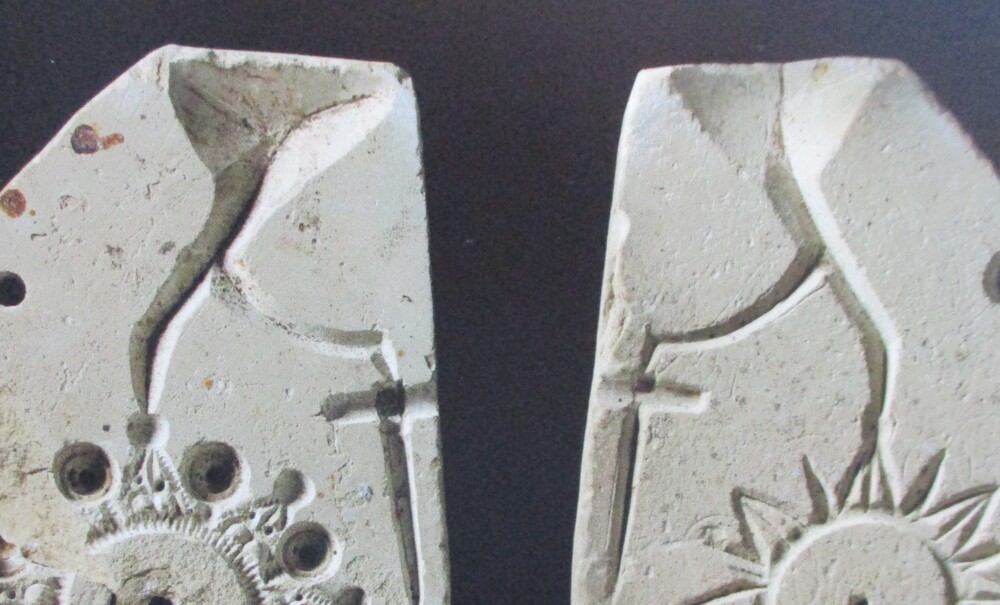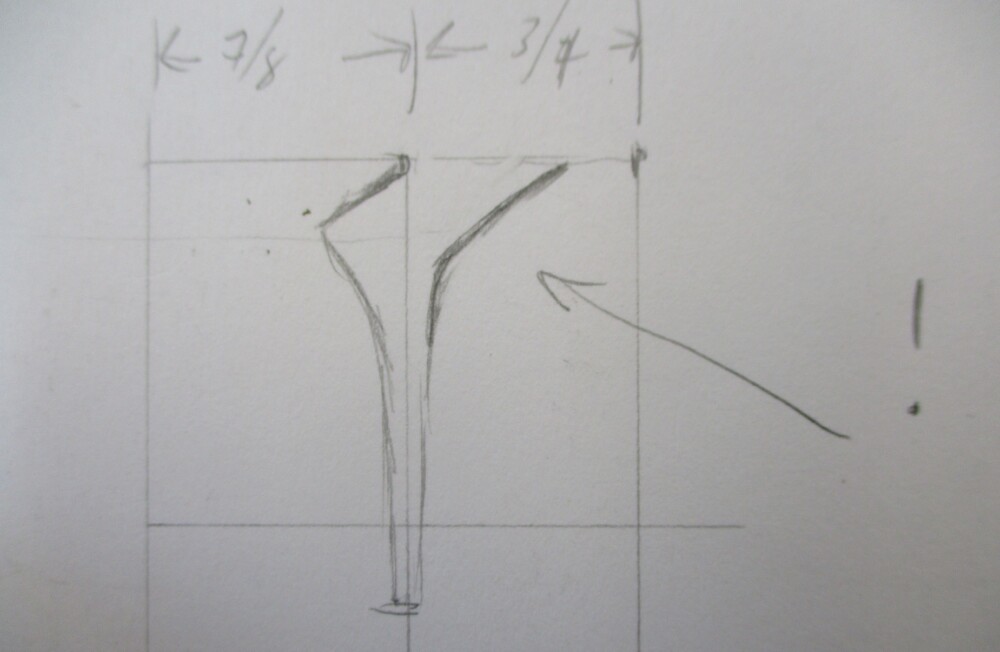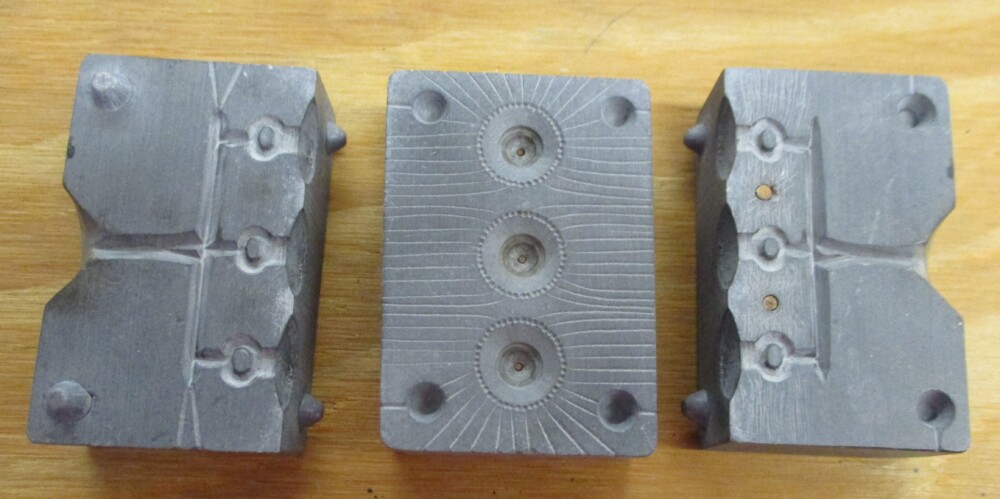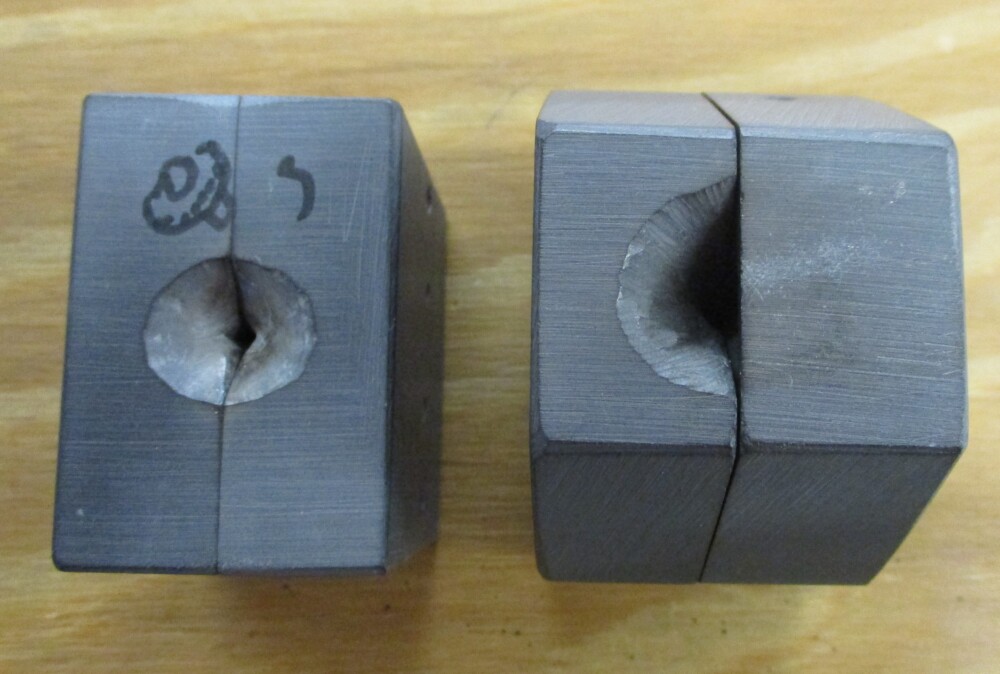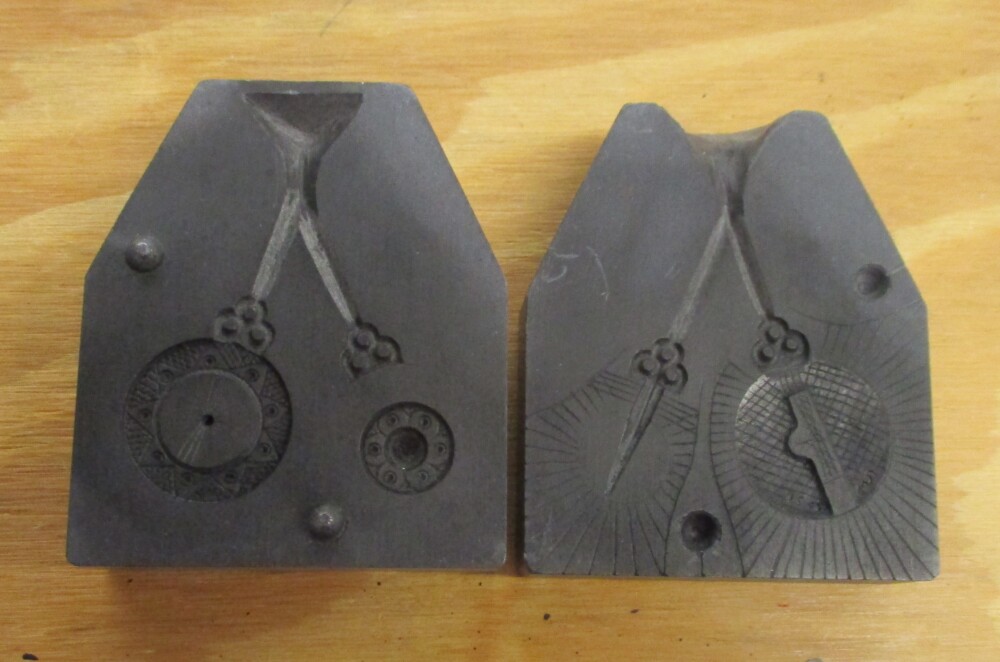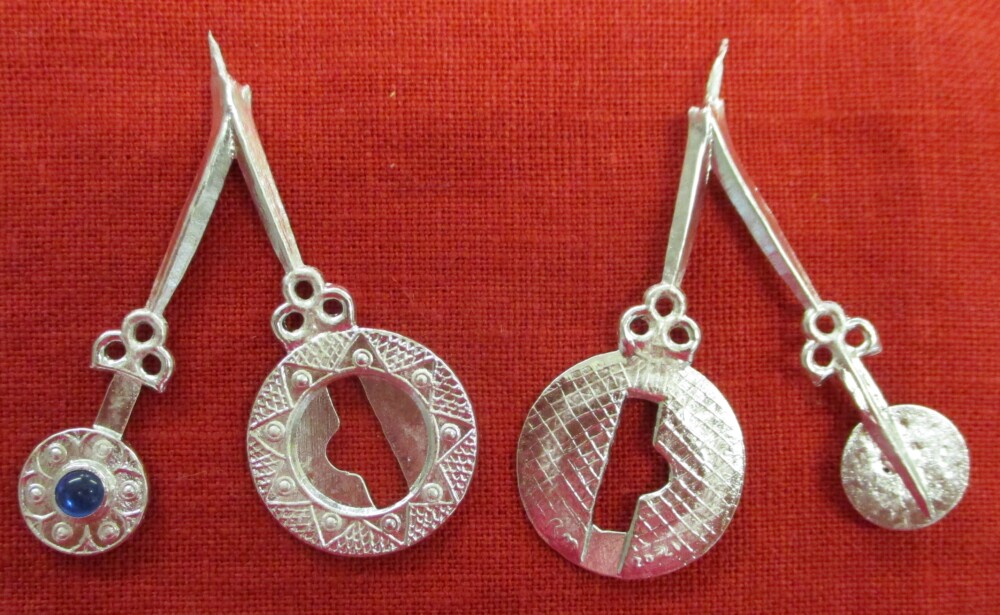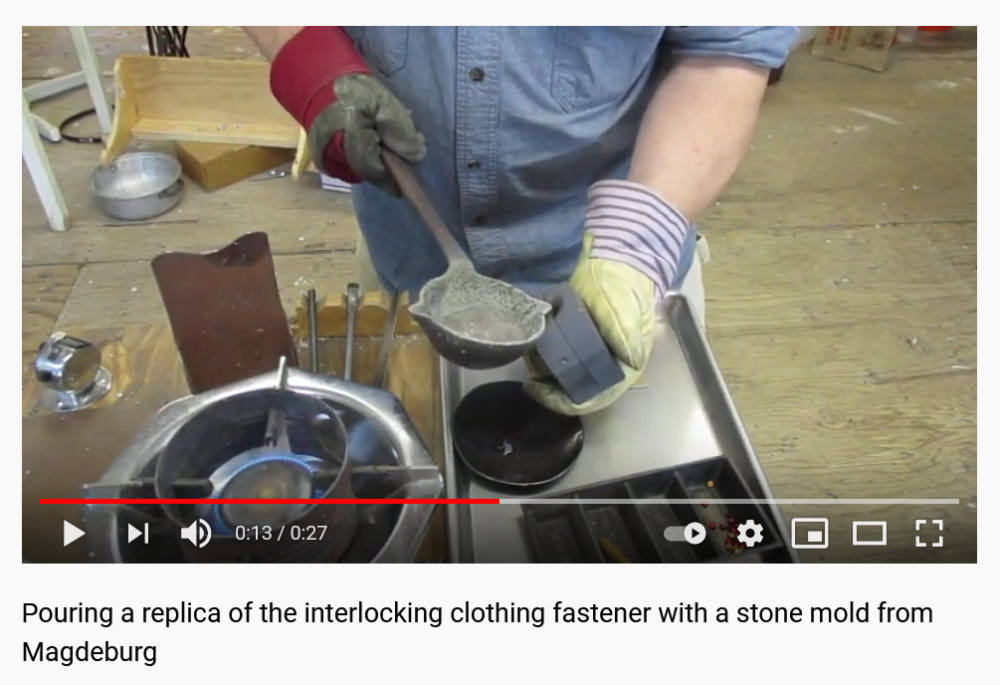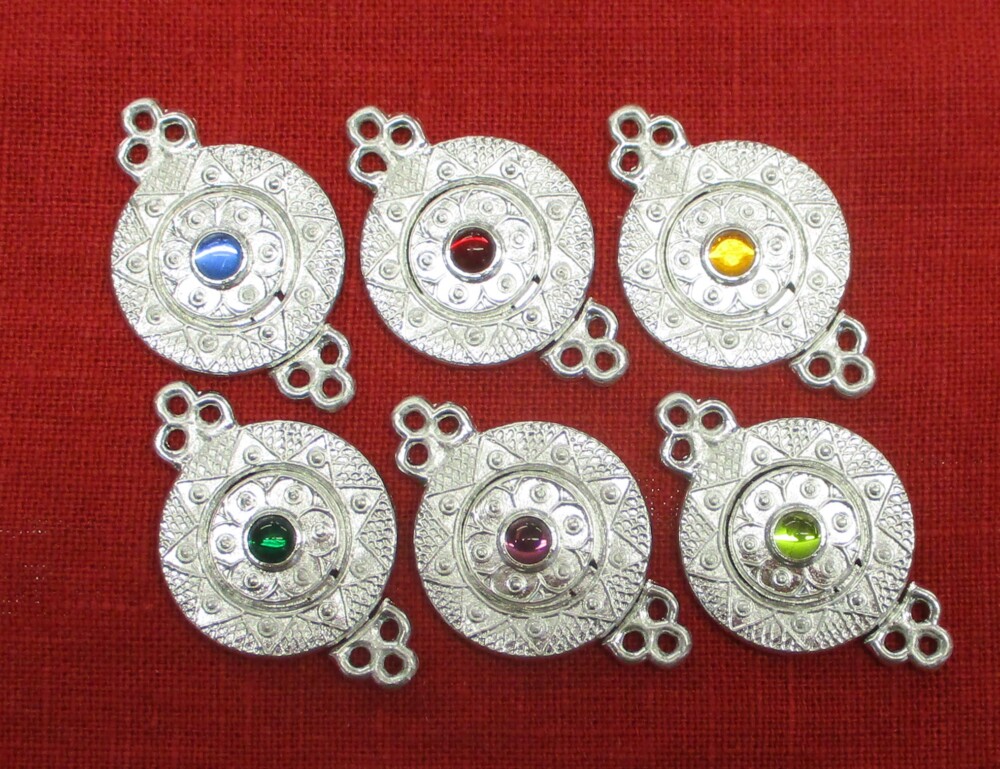
During our greedy, obsessive, first read-through of Daniel Berger’s magisterial book on the hundreds of 13th-century molds from Magdeburg* we noticed a number of molds where the gate (pouring basin) in one of the two mold pieces was closed off by a sort of dam of stone. On the left below, a detail of a dammed-gate mold from Magdeburg. On the right, a sketch of a cross-section through a two-part mold, showing the shapes of the pouring basin in the two halves.
By the second read-through we had realized that of the nine complete molds with restricted pouring basins, all also had one or more hollowed out cavities for cast-in stones. (One mold was broken and there is no way to know what was in the broken part). We have always poured molds with glass stones in 3-part molds and carefully upright, so that gravity holds the stone level while the metal washes around it (3-part mold for buttons with glass stones below, left). But except for 3-part ring molds, the pewterers in Magdeburg seem to have poured items with stones in 2-part molds – at enough of an angle to keep the stone in place, and with a dam across the lower gate to keep the metal from sloshing out. On the right, below, a view of the gates/pouring basins of the 3-part button mold and the 2-part clasp mold.
You know we just have to try something that cool – and Mac has made it work with a copy of one of the Magdeburg molds. The original (below, left) was unfortunately damaged and much of the stone that blocks the gates has broken away. Our copied mold shows what the old one looked like in its prime.
To pour the mold we set a glass stone in the bezel cavity in the lower (constrained) mold half, then level it with a wooden tool.
When the stone is level we set the other half of the mold on top. Holding the mold at an angle, we pour the pewter. Below, right, a completed casting in the mold.
In the completed casting, the stone is held in place by a bezel on the front and the extension of the stem on the back. We have made a brief video showing Mac pouring the clasp. You can view it on Youtube.
We look forward to your comments and questions!
*(Berger, Daniel. Magdeburger Gießformenfund – Herausragendes Zeugnis handwerklicher Zinngießer in einer mittelalterlichen Metropole. Halle: LADA Sachsen-Anhalt, 2020). A must-have for the serious student of medieval pewter casting.

